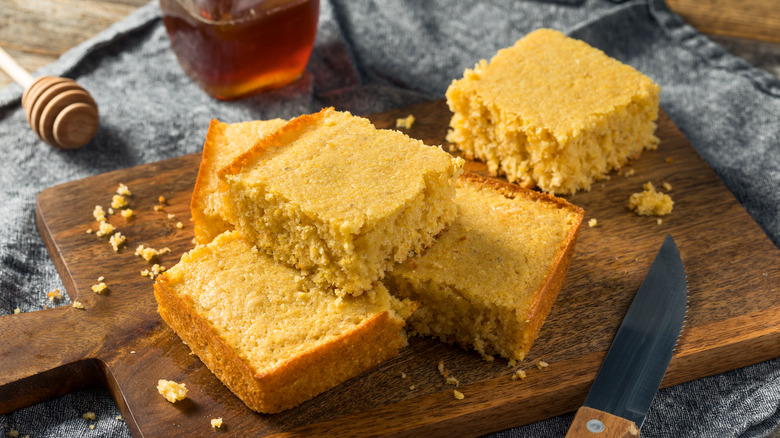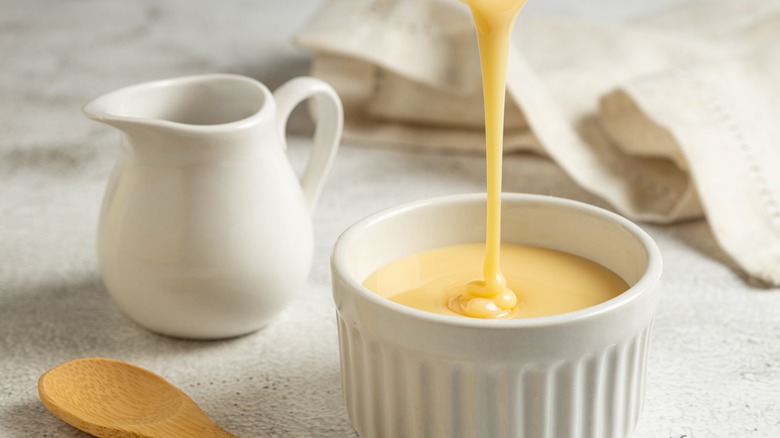Give Cornbread A Rich Golden Crust With Sweetened Condensed Milk
Cornbread is in the hall of fame of Southern sides. Not only is it a delicious side to eat with smoked brisket, but it's just so darn easy to make.
If you're in the sweet cornbread camp, you're going to love a recipe that incorporates sweetened condensed milk. There are several reasons why this unconventional addition just "works" in a batch of cornbread. The first is that the condensed milk acts as a thickener; it will give your cornbread a slightly chewier bite and help alleviate some of the crumbliness of a traditional cornbread recipe. It will also add a special sweetness and help encourage it to caramelize even more while it's in the oven. But perhaps most importantly, it will impart a rich, crispy exterior that gives way to the dense middle.
You'll only need to mix a few tablespoons of the can to your cornbread recipe before you pop it in your skillet. To further encourage browning and a golden crust, we recommend baking your cornbread in a cast iron skillet. The cold batter will hit the hot, preheated skillet with a sizzle, helping promote that crispy crackle your cornbread is craving.
How to use sweetened condensed milk in cornbread recipes
There are tons of cornbread recipes you can use this simple kitchen hack for. Since sweetened condensed milk is already, well, sweet, you can always stick to using it as the sugary element in your cornbread recipe. Our honey sage cornbread skillet, for example, would be excellent aided with extra sweetness from the milk and the subtle herbaceous flavor of the sage. Or, swap out some of the honey in our sweet potato cornbread recipe with the sweetened condensed milk. However, don't think that you just have to stick to sweet stuff. The sugary flavor of the condensed milk can balance out some of the savory notes from ingredients bacon or jalapeños, too.
You can even adapt this tip for a boxed cornbread mix. Stick to adding only a few tablespoons — just like a homemade recipe — and you may have to decrease the amount of milk or water in your recipe to account for the extra liquid.

